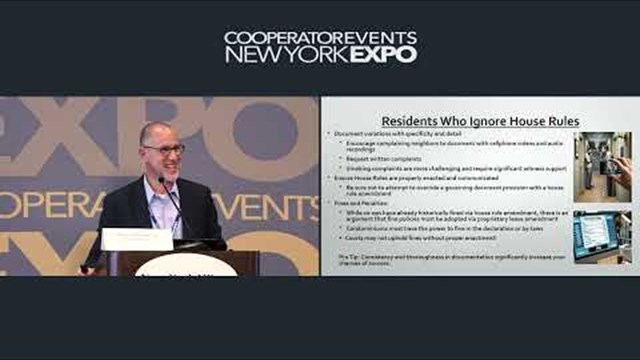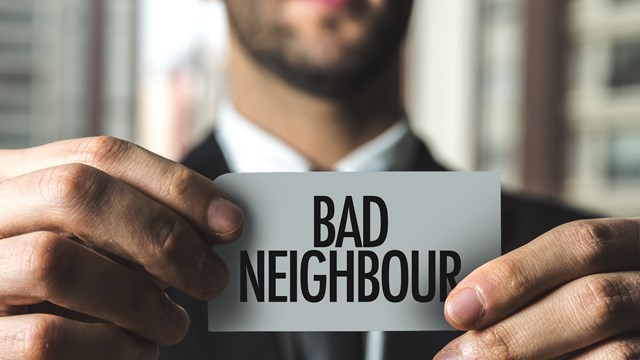People feel ‘harassed’ all the time – by crowded trains, loud noises, and even the weather. Co-op and condo residents often feel that their board, or even a neighbor, is ‘harassing’ them. But what qualifies as harassment in the legal sense? What does it mean in the context of co-op and condo living? And what are the potential consequences of boards – or residents – taking grievances too far?
What is Harassment?
Mark Hakim, an attorney specializing in community law with Schwartz Sladkus Reich Greenberg Atlas in New York City, defines harassment as follows: “In New York State, ‘harassment’ in the criminal context is the intent to harass, annoy or alarm another person in or about public places, engage in conduct or repeatedly commit acts which alarm or seriously annoy the victim, and serve no legitimate purpose. However, there is no civil action predicated on harassment.”
Michael C. Kim, Principal of Michael C. Kim & Associates, a law firm based in Chicago, concurs. “Generally speaking,” he says, “harassment would be actionable when a person is subjected to either verbal or physical actions, which essentially are unwelcome, and are motivated by improper purpose. ‘Improper purpose’ may or may not be obvious. Language can indicate improper purpose.”
Chris Florio, a shareholder at law firm Stark & Stark in Lawrenceville, New Jersey, adds that “harassment’s legal definition in a multifamily environment isn’t any different than in the colloquial environment; it’s someone who is consistently abusive or insulting to you. Schools call it bullying. It’s no different in a multifamily building.”
Sheila Van Duyne, Owner of the Van Duyne Law Group in Reno, Nevada, says that harassment in residential communities is not different from harassment elsewhere. It just shows itself differently.
Harassment in Context
While it may be a good idea to have one, most residential buildings do not have any form of harassment policy, according to Hakim. “Most cooperative and condominium boards,” he explains, “handle all cases of alleged harassment on a case-by-case basis with a ‘you’ll know it when you see it’ policy, often basing it loosely on the criminal definition, as it is very difficult to identify and thereafter prove. The same behavior repeated in different circumstances may be harassment in one case, but not in the other. In the context of the world of cooperatives and condominiums, harassment generally comes in the form of persistent, and often heated communications, that the ‘victim’ believes is threatening, or even defamatory.”
Kim points out that “it often depends on the location where the incident occurs. If it occurs in a common area—a hallway or lobby for instance—we could treat that as a nuisance being created by the offending owner. We don’t want people walking through the lobby screaming and yelling at fellow owners. If it occurs in common areas, the board clearly has the authority to regulate behavior and prohibit it. Most condominium declarations have anti-nuisance provisions.”
Ellen Shapiro, a partner at the law firm of Goodman Shapiro & Lombardi, which has offices in Massachusetts and Rhode Island, adds that “harassment in a multifamily environment has two aspects to it: One, when something happens in a common element (as opposed to strictly between two individuals within the confines of a unit, or not observed by anyone else); and two, if the incident rises to the level of discrimination.”
Potential Flashpoints
In a complex social system like a co-op or condo, there are many interpersonal interfaces where harassment can occur. There are residents, board members, management, and employees. Conflict might arise between two residents; between a board member and a resident; between a resident and an employee; and so on and so forth. The bedrock question is always the same: is there ‘improper motive?’
Kim recalls a case in which he is currently involved concerning an individual resident and an association employee. The unit owner, he says, comes down to the lobby door station for no reason other than to chat up the doorwoman. He’s not there to pick up a package – he just wants to make small talk. He loiters and lingers for no apparent reason other than to engage the employee in conversation. This person has a job to do, so not only is the resident making her uncomfortable, he’s making it difficult for her to do her job. “We’ve sent him a letter asking him to stop,” says Kim. “We’ll see what happens.”
Shapiro adds that “harassment is a very personal issue. What of course may be harassment to one person may merely be conversation to another. You have to consider what is the legal, or possibly criminal, definition of harassment and see if it fits [a given situation]. To the extent that it’s strictly between two people, and it rises to the level of criminal harassment, the person who feels they are the subject of the harassment has a right to go to a local district court and apply for an application for a Complaint of Harassment naming the other party.”
Between Board and Resident
Conflict leading to harassing behavior can run both ways – between boards or board members and residents. “A board member,” says Van Duyne, “...could unfairly target someone [they] didn’t like. You could enforce or issue limitations to one owner and not to another, even if both were violating the same association rule. A board member could target enforcement of governing documents or interpret documents to penalize or harm someone. Nevada’s statutes articulate ways in which the Nevada Real Estate Division will review board member actions to make sure they are abiding by their fiduciary obligations to uniformly enforce governing documents.”
Van Duyne also outlines how an owner can harass a board or association by filing endless complaints, or insisting that they be added to the agenda at association meetings, to name just two common examples. Many of these complaints may be exaggerated or even fabricated outright, but nonetheless they must be presented, which interferes with the timely and efficient operation of the association. She described one situation where an angry owner filed over 100 letters of complaint with their board – and not a single one was substantiated. These complaints often involve the Nevada Real Estate Division (NRED) and as such waste the time and money of everyone involved.
Between Residents—Should the Board Get Involved?
When disputes arise between individual residents, the results can often spill over into common spaces. According to Shapiro: “These are extremely fact-driven situations. No one answer fits all.” The answer then is that each case must be evaluated individually, and with input from professionals such as attorneys and managers.
Florio explains that in New Jersey, “any type of housing related dispute must be provided alternative dispute resolution, or ADR. Almost anything that happens in a condo can trigger this. It’s in the state’s condo act.” He adds, however, that “it could be incumbent upon the association to act if the harassment is not stopped.” He mentions a case in Virginia where a board member of an association who happened to be African American was being harassed by their fellow residents. “We can’t put our heads in the sand. We have certain responsibilities – especially if the act takes place in a common area.”
There is no single approach to each incident, according to Hakim. “Boards should not jump in immediately,” he says. “If a board overreaches, the shareholders or residents may assert that the board acted outside the scope of its authority. We recommend that the managing agent have an open line of communication with counsel to openly discuss the course of conduct the board and its agent should take in each instance. However, on the other hand, in cooperative buildings, where the warranty of habitability applies, there may be instances where the actions of another resident or shareholder causes a breach of that warranty, and the cooperative could be liable. So yes, the cooperative’s board should intervene – but not over-intervene. It is a delicate balancing act that each board and all agents must deal with on a daily basis.”
Community Living Makes for Strange Bedfellows
Hakim relates a situation where he represented a building in which two neighboring residents were feuding – though the reason for their long-simmering issue seemed to have been forgotten. At one point, one resident was alleged to have changed his wifi network name to something quite offensive to the other, and was also accused of smoking marijuana and blowing it under the door of the other resident. The ‘victim’ claimed he was being harassed, and threatened the co-op with an action predicated in the breach of the warranty of habitability, among other things.
The board had to act, but the hard part was coming up with proof. Hakim says he asked the shareholders to come in and resolve the issue between them, but the offer was rebuffed by the alleged offending shareholder. Now the board had to act. How could it prove it was his wifi network with the offense name—one so beyond the pale it was likely legally defamatory? And what to do about the pot smoke? As to the former, the co-op had no specific rules about wifi network names, though they reasoned that a personally malicious or abusive one could fall under offensive conduct. And as to the pot smoke, it was a breach of the co-op’s no-smoking policy and certainly offensive.
The problem was that the board ‘knew’ it was the truculent resident who had chosen the offensive wifi network handle and was blowing clouds of marijuana smoke, but couldn’t prove it. The managing agent again tried to resolve the issues through meetings with each party, to no avail. Eventually, the board was able to get the residents around the suspect apartment to shut down their wifi networks, ultimately enabling with near certainty the identification of the problematic shareholder. They also had a surveillance camera installed, and notified the misbehaving resident of its placement. Within a few weeks, when everyone forgot about the camera, sure enough – they caught the shareholder blowing smoke under his neighbor’s door. Needless to say, the requisite cease-and-desist notices were sent out, threatening a termination of the offender’s proprietary lease, and ultimately the complaints ceased. (Interestingly enough, Hakim says that in the years that have elapsed since then, the two shareholders were each elected to the board and have actually become friends.)
In the end, we all must deal with people, policies, and practices that we don’t particularly like. But whether or not someone’s annoying habit or an interpersonal disagreement rises to the level of true, legally actionable harassment is most often a matter best decided by a legal expert. No board, manager, or resident should take it upon themselves to declare war on anyone else in their building or community, regardless of cause. And it’s always worth remembering that civility, clear boundaries, and good communication go a long way toward maintaining a peaceful, harmonious community for all.
A.J. Sidransky is a staff writer/reporter for The Cooperator, and a published novelist.










Comments
Leave a Comment